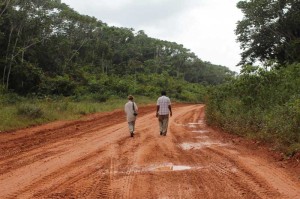Early this year, I started working on the most interesting, and yet challenging, story I have ever done. Jonestown and Peoples Temple are known pretty much around the world, and Norway is no exception. I had already read descriptions of the deaths in feature articles in Norwegian newspapers, and huge pictures of the thousand bodies were hard to forget. The questions were always the same: How crazy must one be, to join a cult like that? Who would kill their babies, and then oneself, and believe it was actually for a greater purpose? Here, as elsewhere, the fascination for the macabre, the evil, seemed to overshadow the human aspect.
A few months before I started researching Jonestown and Peoples Temple, Norway was stricken by a national tragedy. A terrorist took 77 lives, most of them children and youths. Through his reckless and yet calculated assault at a youth camp, he also attacked some of the most beautiful and innocent parts of the Norwegian society: our youths and our democracy. It was said that our nation had “lost its virginity.” And we grieved. How must it then have been for the Guyanese who woke up that day and discovered nearly a thousand lives were lost in the jungle? How did it affect this nation? As much as we, the Norwegians, struggled to understand why this could happen to our country, how could they? With these questions, I went to Guyana, and finally: to Jonestown.
“Just remember, you have been warned.” My colleague and I were told this after we arrived in Georgetown, in the days before we went to Port Kaituma. We are both in our twenties, not particularly tall, and women. Worse – at least in the minds of those who warned us – we have light skin-color, a resemblance to some of the Brazilians who frequented Port Kaituma, and could be mistaken for being prostitutes. Others warned us about the whiskey-drinking villagers, and then wished us a pleasant journey. Not an appealing starting point, but the reality turned out to be lighter.
The people of Port Kaituma – a much different town than it was during Jonestown’s existence – are in general nice and welcoming, at least if they don’t have a very good reason not to be. Later, I asked myself if I may have done a little too thorough research – although that supposedly is never possible in journalism – as we arrived in Port Kaituma maybe a bit too cautious and on-guard.

However, the logistics could have been more thoroughly planned. The guide, the vehicle and the hotel room our travel agency had promised us, turned out not to be there. But these details have a tendency to work out, and they did this time as well. Our biggest concern at the moment was how we were going to make our way into Jonestown – with the roads turned into mud holes because of the rain – in a village taxi. Carlton Daniels, a former shopkeeper and now a hotel owner, promised to go with us. He had been into Jonestown several times when Peoples Temple was there, and he was a valuable source of information. Taxi driver Ray was the one brave enough to defy the muddy roads, and off we went.
One smashed tarantula and a hitchhike with the local Indians in a more suitable vehicle later, Carlton Daniels cleared the way from the entrance of Jonestown. The rain had not yet reached its breaking point; the sky was still holding its breath, at least for a little while, to give us some time. Dark blue clouds pushed us further and further into the jungle, encircled us, until we finally found ourselves standing on a more open spot.
Carlton stood still, his cowboy shirt unbuttoned and his cigarette slowly burning closer to his fingers. Partly broken signs were set up around us. “Well,” “Warehouse,” “Jim Jones Residence.” In the middle, a memorial, the flakes peeled off it: “In memory of the victims of the Jonestown tragedy.”
“I’m never afraid when I’m here,” Carlton said, without any of us asking. “These were peaceful people, loving people.”
Do vestiges of fear and horror still haunt the Jonestown site? No. The jungle has taken care of pretty much of what was left. Here, it was quiet. We spent our time in Jonestown mostly to ourselves, nodding silently to what Carlton had to say. It wasn’t a place to utter the biggest words.
At some point, nature decided we had seen enough. As in one last exhalation, the sky showered us with the best it had to offer of the Guyanese rain. It was time to leave now. Half running, while at the same time trying not to stumble in the rough jungle, we went back to what once was a road.
We spent three days in Port Kaituma. Unlike the capital of Georgetown, we found people who remembered, people who had let their children go to Jonestown for school, or who had received medical help at the Jonestown clinic, or who in one way or another had a connection to the community. When you have spent months doing research for a story, you may take for granted that people care the same way you do. That is not always the reality. People move on, and sometimes try to forget. Particularly in Georgetown, the Jonestown incident seemed for many people buried in the past. In Port Kaituma, however, people often wanted to talk.
When we left, all our clothes with a dust layer of mud, Carlton had one last thing to say. He wanted to make sure we passed the story on, to our children and grandchildren, so that people wouldn’t forget. It is a promise I want to keep.
(Pernille Borud is a freelance journalist based in Norway. Feel free to contact her with any questions at borudpernille@gmail.com.)